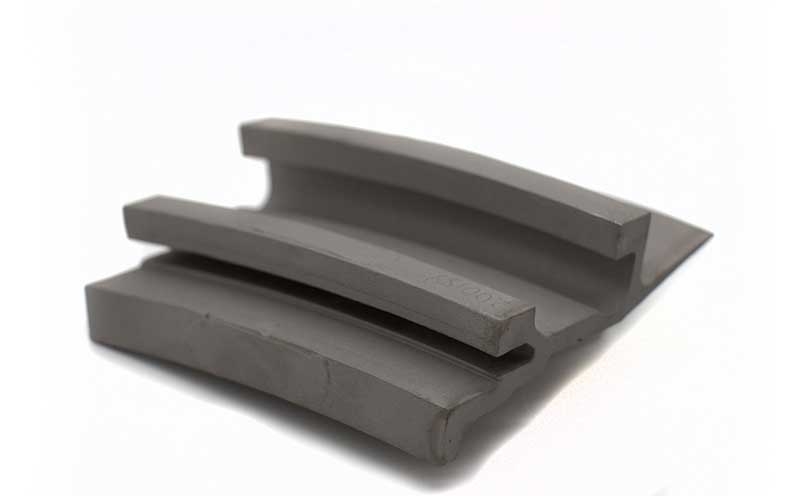Precision Forging of Inconel Superalloy Segments Parts for High-Performance Application
Introduction
Neway AeroTech specializes in precision forging of Inconel superalloy segment components, specifically engineered for high-performance environments in aerospace, power generation, and industrial turbines. Utilizing advanced superalloy precision forging technology, we achieve dimensional accuracy within ±0.1 mm, superior mechanical properties, and consistent surface finishes (Ra ≤1.6 µm).
Our forged Inconel segments maintain optimal structural integrity at operating temperatures exceeding 1000°C, ensuring exceptional reliability and performance under extreme conditions.
Core Challenges in Precision Forging Inconel Segments
Precision forging of Inconel alloys, including Inconel 718, Inconel 625, and Inconel 713C, presents significant manufacturing challenges:
High deformation resistance at forging temperatures (950–1150°C).
Precise dimensional control (±0.1 mm) for complex geometries.
Minimization of surface defects and achieving fine surface finish (Ra ≤1.6 µm).
Ensuring consistent microstructure for optimal mechanical properties.
Detailed Precision Forging Process
The precision forging process for Inconel superalloy segments includes:
Billet Preparation: Heating superalloy billets precisely within forging temperature ranges (typically 950–1150°C).
Die Forging: Closed-die forging presses with forces ranging from 500 to 5000 tons are employed to achieve accurate geometric shapes.
Controlled Deformation: Managing deformation rate and temperature carefully to maintain microstructural integrity and minimize grain growth.
Precision Trimming and Finishing: Removing flash through precision trimming and conducting CNC finishing operations to meet exact dimensional requirements.
Post-Forging Heat Treatment: Solution annealing and aging processes precisely tailored to enhance mechanical properties and stabilize microstructures.
Final Inspection: Comprehensive dimensional verification using Coordinate Measuring Machines (CMM) and non-destructive testing methods to guarantee quality compliance.
Comparison of Inconel Segment Manufacturing Methods
Method | Dimensional Accuracy | Surface Finish (Ra) | Mechanical Properties | Microstructure Control | Cost Efficiency |
|---|---|---|---|---|---|
Precision Forging | ±0.1 mm | ≤1.6 µm | Excellent | Excellent | High |
Vacuum Investment Casting | ±0.05 mm | ≤1.6 µm | Superior | Excellent | Medium |
Powder Metallurgy | ±0.03 mm | ≤1.2 µm | Superior | Superior | High |
CNC Machining | ±0.01 mm | ≤0.8 µm | Good | Moderate | Medium-High |
Manufacturing Method Selection Strategy
Selecting the optimal manufacturing method for Inconel segment parts involves careful consideration of industry-specific requirements and technical specifications:
Precision Forging: Ideal for serial production volumes (500–10,000 units/year), offering consistent mechanical performance, tensile strengths up to 1375 MPa, and tight dimensional tolerances of ±0.1 mm, providing cost-effective solutions for components such as turbine discs and compressor blades.
Vacuum Investment Casting: Optimal for components with intricate shapes and internal cooling channels, where dimensional precision of ±0.05 mm and fine surface finishes (Ra ≤1.6 µm) are critical, suited to production volumes of 100–5000 units/year, including complex aero-engine turbine blades.
Powder Metallurgy: Preferred for high-performance applications requiring ultimate mechanical properties such as tensile strengths exceeding 1400 MPa and exceptional fatigue resistance. It delivers ultra-precise tolerances of ±0.03 mm, beneficial for aerospace turbine discs and critical components with annual volumes of 50–500 units.
CNC Machining: Suitable for prototype development, small-batch production (less than 100 units/year), and finishing operations requiring very high precision (±0.01 mm) and superior surface quality (Ra ≤0.8 µm), useful in rapid prototyping and limited series aerospace components.
Inconel Alloy Material Performance Matrix
Alloy | Forging Temp (°C) | Max Service Temp (°C) | Tensile Strength (MPa) | Yield Strength (MPa) | Applications |
|---|---|---|---|---|---|
950–1040 | 700 | 1375 | 1100 | Turbine discs, compressor parts | |
980–1150 | 815 | 965 | 490 | Exhaust components, turbines | |
1020–1100 | 950 | 1200 | 1050 | Turbine blades, segments | |
980–1120 | 815 | 1275 | 850 | Turbine rotor components | |
980–1175 | 900 | 600 | 280 | Furnace components | |
1050–1150 | 850 | 1050 | 850 | Advanced turbine components |
Material Selection Guidelines
Selection guidelines for Inconel alloys:
Inconel 718: Chosen for critical turbine discs and compressor parts requiring high strength, fatigue resistance, and reliability up to 700°C.
Inconel 625: Ideal for exhaust components and hot-section turbines with exceptional oxidation resistance and good mechanical strength up to 815°C.
Inconel 713C: Optimal for turbine blades and segments requiring high tensile strength (1200 MPa) and stability at temperatures up to 950°C.
Inconel X-750: Preferred for rotor components needing superior creep and fatigue properties at temperatures approaching 815°C.
Inconel 800H: Suited for furnace components where oxidation resistance and moderate mechanical properties at elevated temperatures (up to 900°C) are critical.
Inconel 939: Excellent for advanced turbine segments needing balanced mechanical properties and thermal stability at temperatures around 850°C.
FAQs
Why choose precision forging for Inconel components?
What dimensional accuracy can precision forging achieve?
How do post-processing treatments improve forged part performance?
Which Inconel alloys are best suited for turbine segment applications?
What quality assurance measures ensure precision forging reliability?

